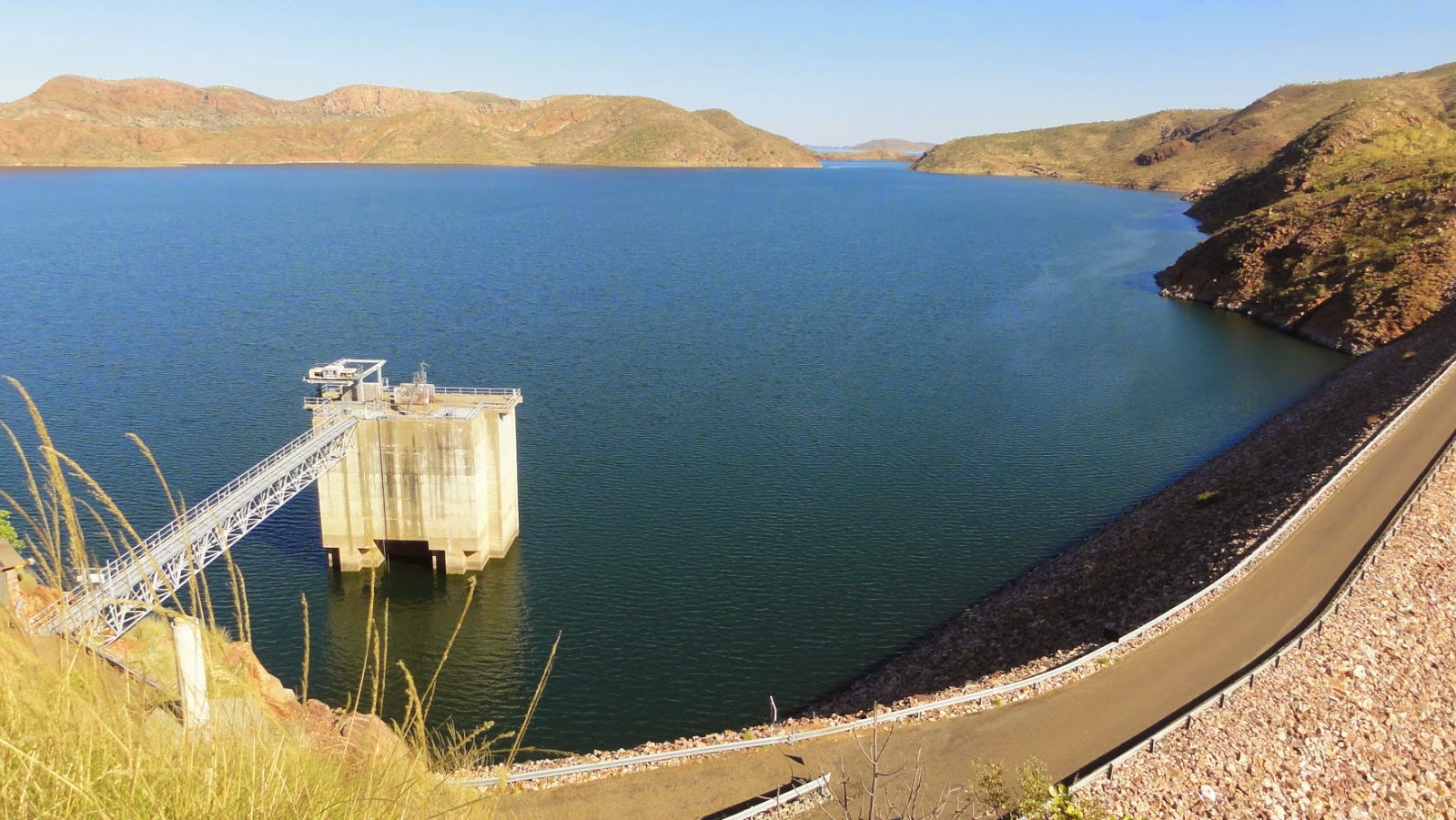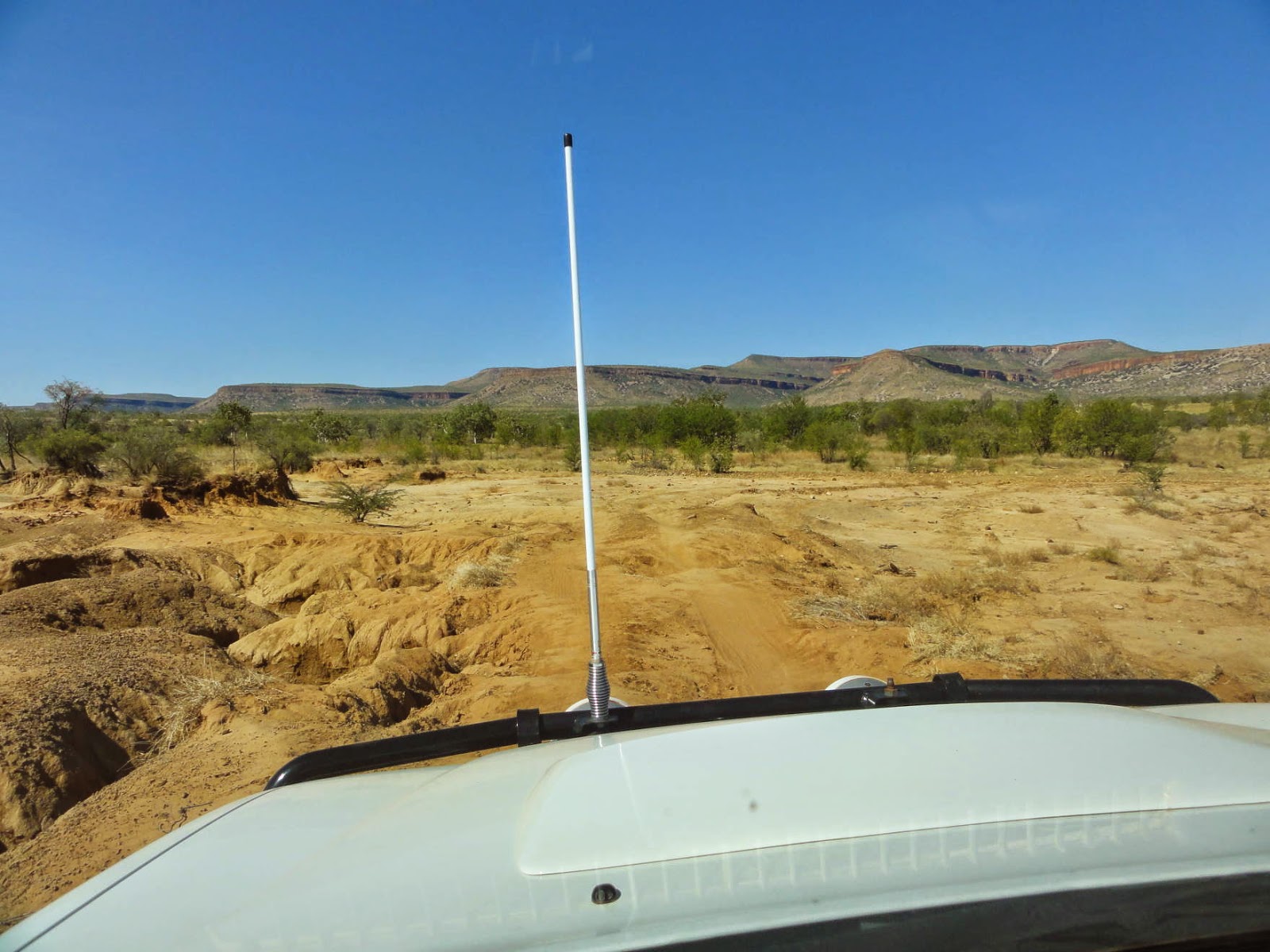The purpose of this roof is to collect rainwater for the campers. Why not put a picnic table underneath instead of a tree?
Kirsten bought a new camera with a good zoom lens. Now I can take bird photographs! Below a blue-winged Kookaburra, the northern version of our Laughing Kookaburra (they laugh as well by the way).
A black-headed python crossing the road. Lucky we never go very fast!
Lake Argyle is Australia’s largest expanse of freshwater and contains up to 10,763 gigalitres (21 Sydney Harbours!) of water. It is a man-made lake, providing irrigation for farming land around Kununurra.
Most of Argyle Downs, a cattle station, is now under water (including many sacred Aboriginal sites).
The irrigated areas are clearly visible on Google Earth, surrounded by an otherwise very dry country
Wyndham was first established in the 1880's as a port to service the goldfields and Kimberley cattle stations. It is located where five large rivers (the Ord, Forrest, King, Durack and Pentecost) enter the Cambridge Gulf. As seen below from a lookout, the area mostly contains mangrove swamps, mudflats, salt pans and brackish muddy water, which is paradise for saltwater crocodiles. Apparently, Wyndham had a "suicide club" where young men would go for a daily swim off the jetty. The activity stopped when one was taken by a crocodile.
The Ord River floodplains contain many wetlands, important to migratory birds. Parry Lagoons Nature Reserve below.
Anybody recognise this? It's where Baz Luhrmann's film "Australia" was shot. It's the Cockburn Range, which is an extensive sandstone escarpment, surrounded by seasonal floodplains.
We circumnavigated the range on a badly maintained 4WD track. Great fun!
Cheers! Kirsten photographing the sunset on the range from Home Valley, a cattle station on the Pentecost River. The result below.
El Questro is another working cattle station and is famous as a "wilderness park tourist resort". The property is almost 1,000,000 acres in size and comprises spectacular gorges, waterfalls, creeks and swimming holes. At Emma Gorge below, one of the waterfalls is even thermal!
A hot day of walking in the El Questro Gorge.
We saw four common tree snakes within 20 minutes! Apparently they don't eat cane toads!
Moonshine Gorge on El Questro below....
..... and some of the country seen from a lookout.
The Rainbow Bee-eater is one of most common residents.

























No comments:
Post a Comment